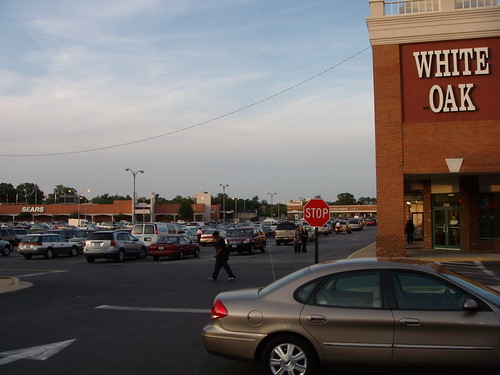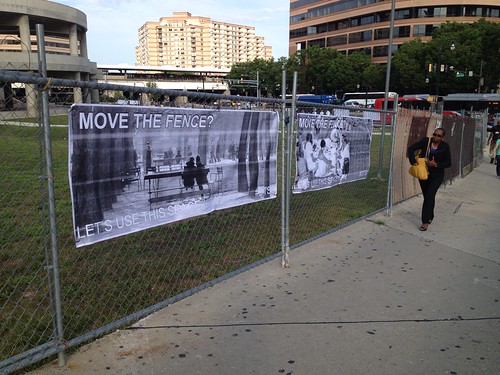The DC area has long faced an east-west divide, with more of the wealth going to the west side. Increasingly, investment is also heading to urban areas over suburban ones. For struggling suburban areas on the east side, the only answer is to take on more urban features.
One of those places is White Oak in eastern Montgomery County, where the County Council will vote tomorrow on a plan to create a new town center. Local residents are eager to have more jobs and amenities close to home, but civic and environmental groups want to limit the amount of density in White Oak because it's several miles from a Metro station and roads are already congested.
But the kind of compact, dense development proposed for White Oak could allow residents to access jobs, shops, or other amenities by walking, biking, or simply driving a shorter distance than they would otherwise. It would generate less traffic than the alternative: more of the sprawling, car-oriented development that's currently allowed in White Oak, plus additional sprawl farther out.
 |
| The White Oak Shopping Center. All photos by the author unless noted. |
One of those places is White Oak in eastern Montgomery County, where the County Council will vote tomorrow on a plan to create a new town center. Local residents are eager to have more jobs and amenities close to home, but civic and environmental groups want to limit the amount of density in White Oak because it's several miles from a Metro station and roads are already congested.
But the kind of compact, dense development proposed for White Oak could allow residents to access jobs, shops, or other amenities by walking, biking, or simply driving a shorter distance than they would otherwise. It would generate less traffic than the alternative: more of the sprawling, car-oriented development that's currently allowed in White Oak, plus additional sprawl farther out.








